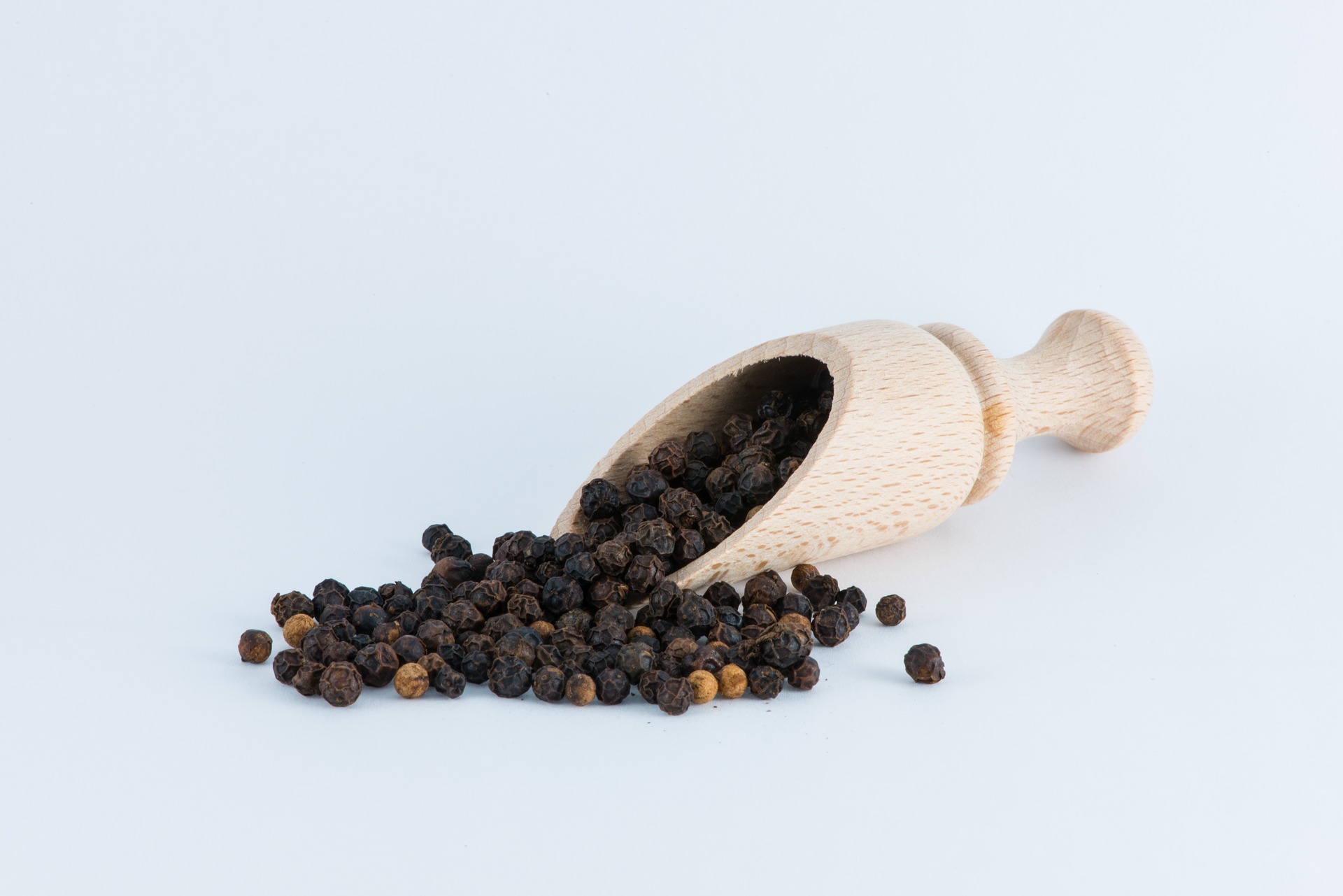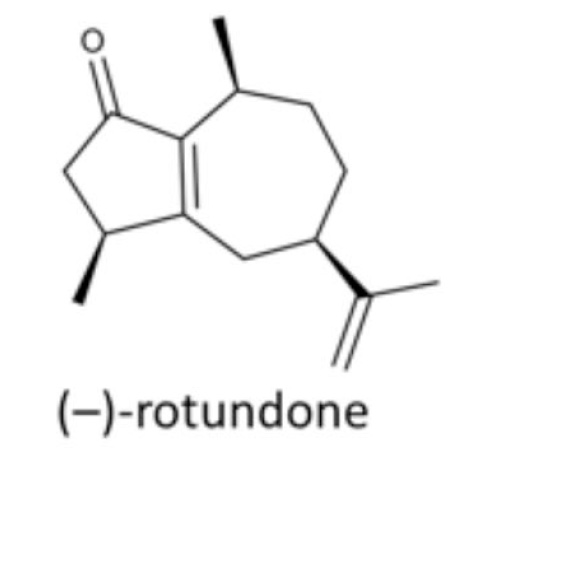What does Make Peppery Wines Peppery?
Peppery wines exhibit a spicy flavor, reminiscent of black pepper, but without the pungency of pepper. Although perceiving pepper in red wine might be unexpected, it is a characteristic of many cool-climate red wines.
Gamay wines from Beaujolais or Ontario and Syrah wines from Côtes du Rhône usually have this typical black pepper note, well blended with other aromas. Certain Australian Shiraz wines also have this peppery note in their profiles.
But what is the origin of the black paper aroma in wine?

Origin of the pepper aroma in wine
I read a review by a French group of researchers, which compiled all the current knowledge on peppery wines [1]. Here are the key points that I summarize for you.
In 2008, after eight years of investigation, researchers in Australia finally identified the one aroma compound making wines peppery.
The chemical name is quite complex [(3S, 5R, 8S) -5-isopropenyl- 3,8-dimethyl-3,4,5,6,7,8-hexahydro-1 (2H) -azulenone]. It belongs to the family of sesquiterpenes; however, the common name, Rotundone, is what you want to remember.
Eight Facts about Rotundone, the Aroma Compound of Peppery Wines

This aroma compound has many exciting facets.
1- Interestingly, Rotundone was unknown until significant improvement of flavor chemistry methodologies and validation with a trained sensory panel made it possible.
Until the discovery of Rotundone, scientists thought that a combination of several aroma compounds were necessary to produce the peppery aroma in wine.
2- Rotundone is not specific to grape varieties. Researchers have found it in Asian nutgrass, aromatic herbs such as rosemary, thyme, and basil.
3- It takes only a few ng per liter to detect Rotundone: 8 ng/l in water (0.000000008g/L) and 16 ng/L in red wine, specifically.
4- According to the French review, 25% to 35% of people do not perceive Rotundone at a high level in a water solution. In other words, about 1/3 of wine drinkers may not experience peppery wines and are anosmic to the compound Rotundone.
5- Most consumers don’t mind tasting a black pepper aroma in a glass of wine. However, the research found that wine connoisseurs tend to enjoy peppery wines more than consumers less knowledgeable in wine. What about you?
6- Rotundone production happens in the grape skins and accumulates quickly during the last few weeks before grape maturity. However, grape stems and leaves also express this compound.
7- The cool temperature and a wet growing season create the conditions for enhancing Rotundone concentration.
8- Hot temperatures, however, negatively affect the production of Rotundone. Climate change and global temperature increase are concerning for wineries if they want to produce consistently peppery wine styles, vintage after vintage.
Train to Identify Black Pepper in Red Wine

First, you need to prepare a black pepper aroma reference.
Drop several peppercorns or a tsp of grounded black pepper in a glass of red wine; let macerate for a couple of hours. Filter, and you will smell the black pepper aroma.
You may taste it too, however, remember to distinguish the aroma from the pungent/burning sensation in the mouth.
Second, prepare two glasses, one with the wine without black pepper (Control sample)and one glass with the same wine complemented by 50% of black pepper wine (Test sample).
Third, smell the control glass first and memorize its aromas. Then smell the test glass. What is different?
Train by decreasing the concentration of the black pepper wine, from 50% to 40%, etc.
Download the Black Pepper Aroma Card
I created a flashcard including the essential information about the Black Pepper Wine Aroma.
Read comments from other readers
Rotundone in Gruner Veltliner and skin contact impact, by Richard B.
Reference
[1] Geffroy O., Kleiber D., & Jacques A. (2020). May peppery wines be the spice of life? A review of research on the ‘pepper’ aroma and the sesquiterpenoid rotundone. OENO One, 54(2), 245-262.
I love reading your comments and suggestions
Submit them
using this link


